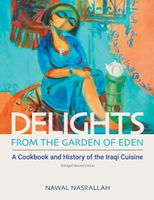Advertisement
Baharat
Published 2019
Baharat is an all-purpose blend of spices, somewhat similar to the Indian garam masala ‘spice blend.’
Baharat is used throughout the Middle East, but each region, or even each household, has its own favorite blend of spices.
In all probability, at some point of time during the Ottoman era the name bihar/bahar started to designate ‘spice mix,’ after Bihar, the old name of India, which is indeed the source of most of the spices used in the Middle East. Otherwise, during the pre-Ottoman period, spice mixes in the medieval Muslim eastern and western Arab world were called atraf al-teeb, afwah al-teeb, and nawafih al-teeb (literally ‘blend of aromatic spices’). Besides using spices individually, medieval Arabic cookbooks sometimes required blends of spices. One of al-Warraq’s tenth-century recipes, for instance, calls for al-afaweeh al-arba’a (the four aromatic spices) and the reader was expected to recognize this blend. But al-Warraq does not leave things to chance, he actually does provide its components: spikenard, cloves, cassia, and nutmeg. We are equally fortunate that the thirteenth-century


